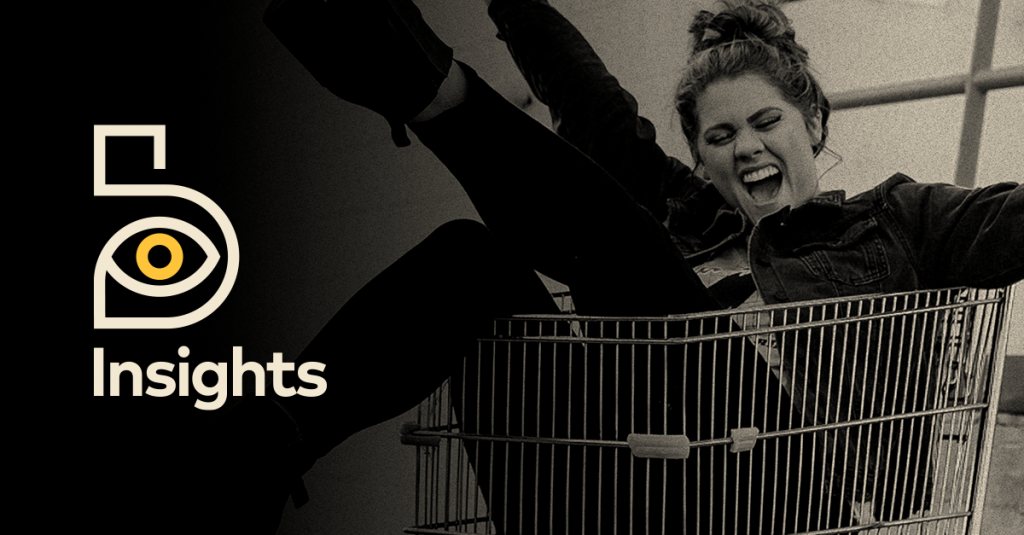As a leading consumer insights agency, we conducted research about what consumers look for when shopping in our latest study: Retail Disrupted: What US Shoppers Want From Brands Today. We’ve uncovered timely retail trends that can help you provide unforgettable shopping experiences for customers that will entice them back into physical stores.
Five critical consumer trends to benefit retailers
As we noted before in previous articles, the coronavirus pandemic spiked growth in an already-existing trend towards the rise of digital sales. Consumers discovered the convenience and savings they could enjoy by ordering online and getting deliveries at their front doors.
For example, digitally native DTC brands often replace traditional retailers by attracting and engaging customers with emerging technologies. Even as life slowly returns to a more normal state, digital sales keep increasing. Consider five retail trends that retailers can use to benefit their businesses.
1. Social shopping
Retailers encourage customers and influencers to share their experiences with products on social networking sites. These sellers engage new customers by creating a shared experience online. According to Bigeye’s research report Retail Disrupted, almost nine out of ten consumers admit to making purchases because of an introduction to the product by an influencer on social media. Even more, social commerce has emerged as a primary source of leads for DTC brands.
Popular social networks for social shopping include Instagram, Facebook, Pinterest, and TikTok. At the same time, almost all sites with a social aspect, like YouTube and Reddit, support this kind of social sharing for products.

2. Augmented Reality shopping apps
AR shopping apps from Home Depot, Target, and IKEA can show consumers how a sofa will look in their living room. The Sephora and Amazon apps let customers see how various lipstick shades and eyeshadow colors will complement their skin tones. Customers can use these apps to make better at-home or in-store shopping choices. Most consumers believe that within 10 years, shopping will involve more interfacing with technology than human salespeople.
3. DTC subscriptions
Digital marketing opened up a direct pathway to consumers. By bypassing retailers and other intermediaries, DTC businesses can improve profits while keeping prices competitive. Retail Disrupted revealed that 72% of hispanic shoppers have purchased from a DTC brand in the past six months.
Subscriptions offer customers convenience and savings, and they help drive retention for brands. Also, brands don’t have to sacrifice other distribution modes to benefit from DTC sales. Some brands originated as digital natives and expanded to retailers. In contrast, legacy companies began focusing on direct selling after only working through distributors and retailers for years.

4. Socially conscious consumerism
Almost forty percent of shoppers engage in conscious consumerism. Socially conscious consumerism refers to purchase decisions with positive impacts upon the environment, society, or economy. Some common examples of conscious consumerism might include buying clothes and accessories at thrift stores, donating items to charities, and purchasing products from stores specializing in pre-owned and vintage clothing.
In these cases, people choose sustainable purchases that may also offer a chance to save money. In other cases, shoppers might choose new products with more eco-friendly packaging and eco-safe ingredients.

5. Physical retail stores of the future
Digital technology will not just impact online shopping but also in-store experiences. Improvements in retail tech can help attract shoppers back to stores and make physical shops more efficient to run. For example:
- Over 30 percent of shoppers feel that entertainment or other in-store experiences would entice them to visit a local store.
- Almost as many people sit at the other end of the scale and prefer stores like Amazon Go or Apple store that let them choose items, pay with an app, and leave without needing to visit a checkout line at all.
Many discount, drug, and grocery stores already rely on self-checkout lines that can speed up checkout time and reduce the number of cashiers needed. Some shoppers prefer these, but others find them awkward to use when they have bulky, awkward, or unusual purchases. Perhaps this represents a transitional phase with better solutions for automated checkout on the horizon.

How a retail marketing agency benefits retail clients and consumers
Now more than ever, retailers need to adopt a customer-focused marketing plan. Retailers can’t only focus on delivering the best products, but they also must provide these products in a way that customers prefer. The solutions involve adding effective enticements to get shoppers to visit their offline or online stores.
Technology may help make purchases socially conscious, cheaper, convenient, or even more fun. At the same time, innovation can help businesses operate more efficiently. A consumer insights agency will spot the retail trends that help their customers achieve these goals for their unique businesses.
Download Retail Disrupted: What Shoppers Want from Brands Today for more insights.


